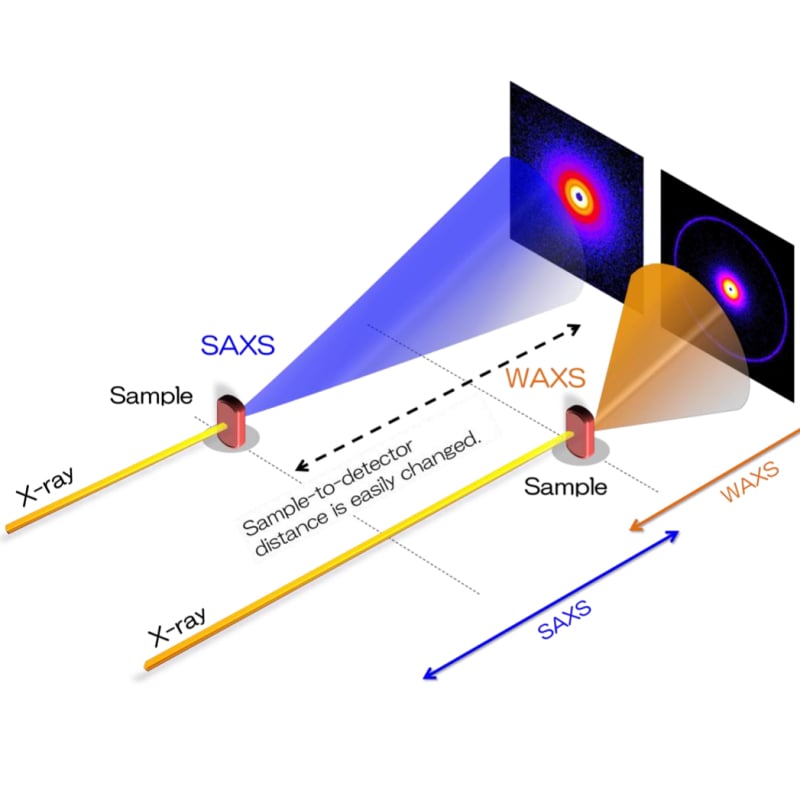Industrial SAXS / WAXS
Inspect nanoscale materials for shape and structure
Small-angle X-ray scattering (SAXS) is a small-angle scattering technique by which nano-scale density differences in a sample can be quantified. This means that it can determine nano-particle size distributions, resolve the size and shape of (mono-disperse) macro-molecules, determine pore sizes, characteristic distances of partially ordered materials, and much more. This is achieved by analyzing the elastic scattering behavior of X-rays when traveling through the material, recording their scattering at small angles (typically 0.1 - 10°).

SAXS is used for the determination of the microscale or nanoscale structure of particle systems in terms of such parameters as averaged particle sizes, shapes, distribution, and surface-to-volume ratio. The materials can be solid or liquid and they can contain solid, liquid or gaseous domains (so-called particles) of the same or another material in any combination. Not only particles, but also the structure of ordered systems like lamellae, and fractal-like materials can be studied. The method is accurate, non-destructive and usually requires only a minimum of sample preparation. Applications are very broad and include colloids of all types, metals, cement, oil, polymers, plastics, proteins, foods and pharmaceuticals and can be found in research as well as in quality control.
Wide-angle X-ray scattering (WAXS) is a technique used in materials science, chemistry, and various other fields to analyze the structure of materials at the atomic or molecular level. It is a type of X-ray scattering that focuses on measuring the scattering of X-rays at wide angles, typically between 10 and 80° with respect to the incident X-ray beam.
In WAXS, a sample is irradiated with a beam of X-rays, and the scattered X-rays are detected at various angles using a detector placed opposite the sample. The scattering pattern obtained provides information about the arrangement of atoms or molecules within the sample, including their positions, orientations, and interatomic distances.
WAXS is particularly useful for studying crystalline materials, such as polymers, proteins, and pharmaceutical compounds, as well as complex fluids and soft matter. By analyzing the WAXS patterns, researchers can gain insights into the structural properties of materials, including their crystallinity, phase composition, and degree of order.
Overall, WAXS is a powerful technique for characterizing the atomic and molecular structure of materials, providing valuable information for understanding their properties and behavior in various applications.
Rigaku recommends the following systems

Contact Us
Whether you're interested in getting a quote, want a demo, need technical support, or simply have a question, we're here to help.
